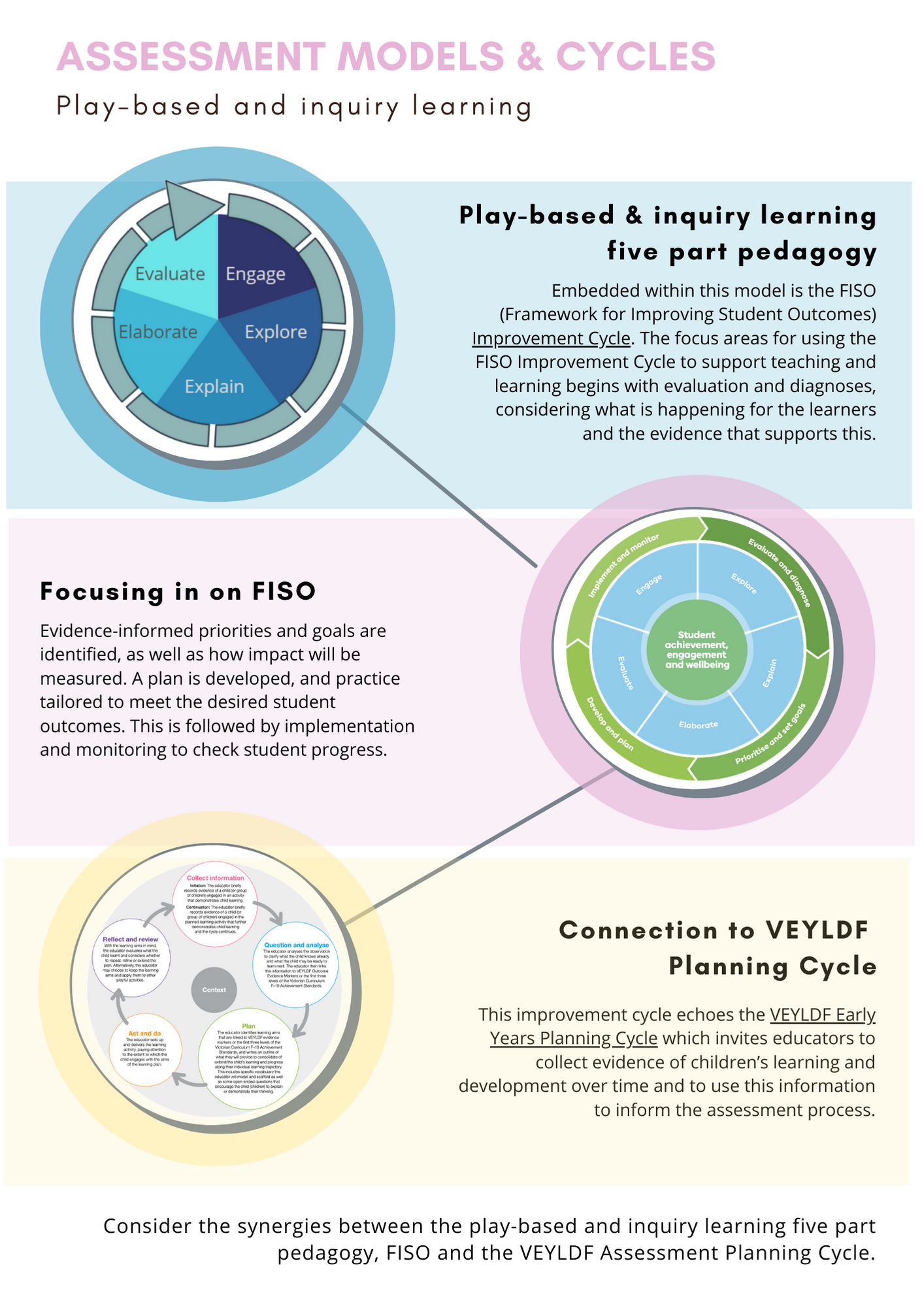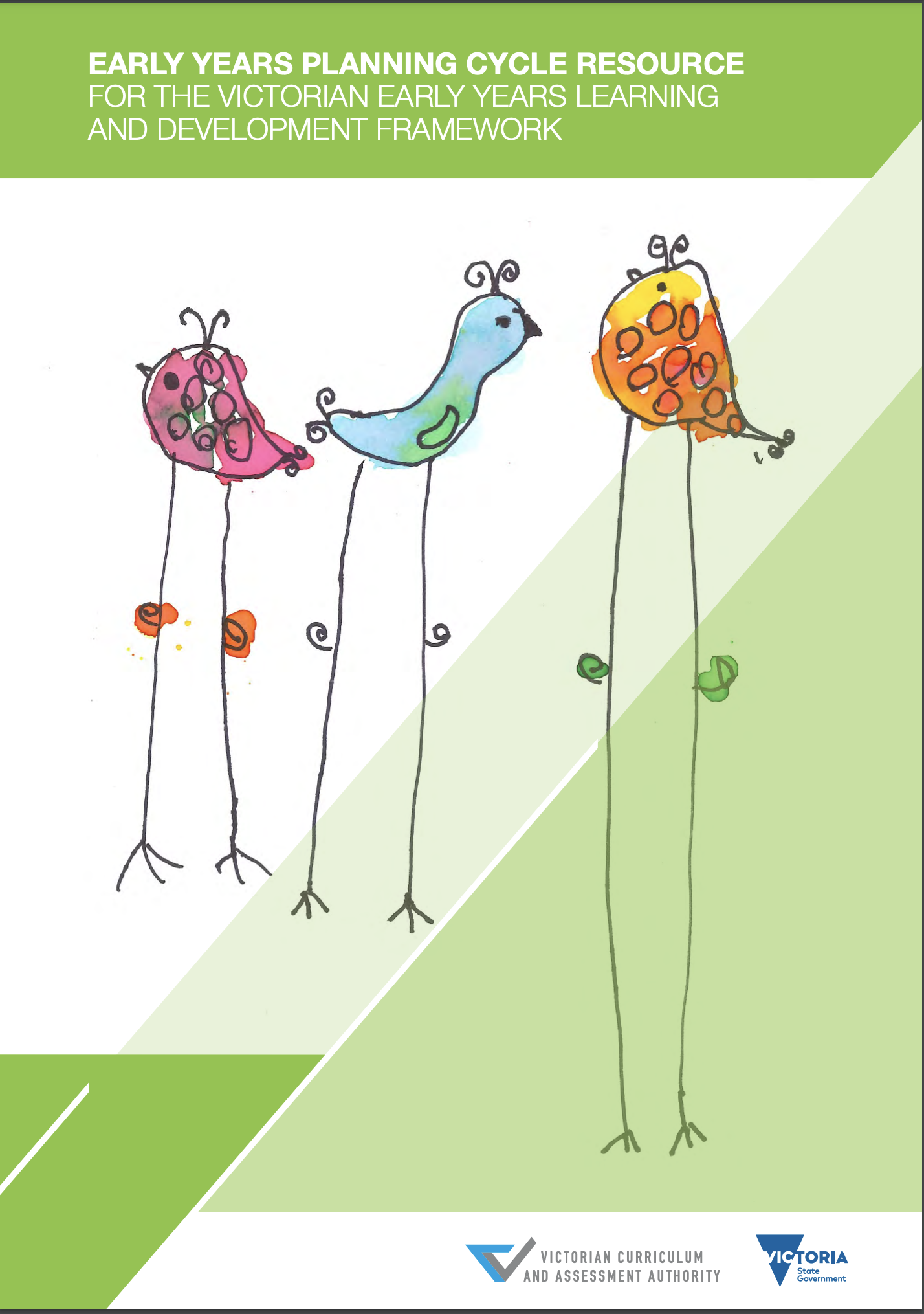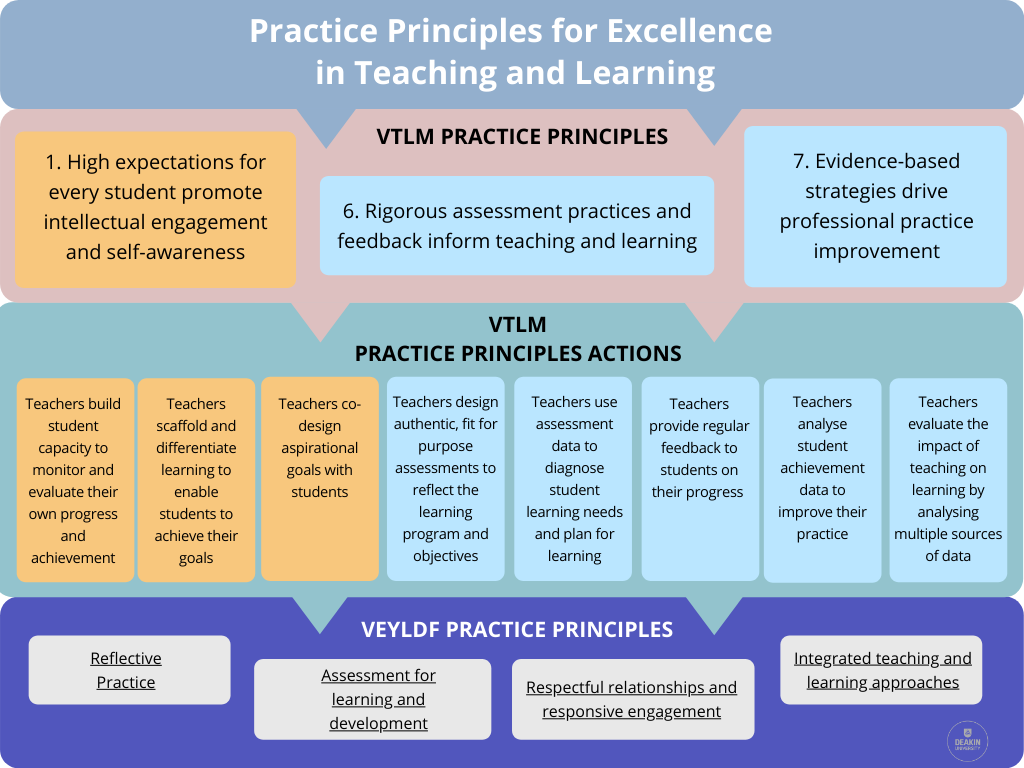Discussing assessment cycles
The Victorian Teaching and Learning Model (VTLM)
 Practice Principle 6 for Excellence in Teaching and Learning (pdf - 1.28mb) expects rigorous assessment practices and feedback to inform teaching and learning. This Practice Principle notes the need for assessment to be authentic and designed for specific purposes.
Practice Principle 6 for Excellence in Teaching and Learning (pdf - 1.28mb) expects rigorous assessment practices and feedback to inform teaching and learning. This Practice Principle notes the need for assessment to be authentic and designed for specific purposes.
In Module 2 you were introduced to the pedagogy underpinning the
VTLM. The play-based and inquiry learning five-part pedagogy, highlighted the domains of Engage, Explore, Explain, Elaborate and Evaluate. This is further explored in the infographic below, which focuses on the
Framework for Improving Student Outcomes (FISO) Improvement Cycle and the
 VEYLDF Planning Cycle.
VEYLDF Planning Cycle.

 Downloadable version of Assessment Models and Cycles infographic (pdf - 970.13kb)
Downloadable version of Assessment Models and Cycles infographic (pdf - 970.13kb)
Intersection between the VTLM and the VEYLDF
To understand the intersection between the VTLM and the VEYLDF watch the
‘Introduction’ video of the Early Years Planning Cycle available on the Victorian Curriculum and Assessment Authority website.
Watch the
“Introduction” video from VCAA website here.

 DET Mod 3.3 - Early Years planning cycle resource downloadable PDF
DET Mod 3.3 - Early Years planning cycle resource downloadable PDF
In this video, Dr Caroline Cohrssen outlines the planning cycle resources developed by the Victorian Curriculum and Assessment Authority to guide planning and assessment.
Please note the document has been organised to reflect the different age groups of learners – birth to 2 years, 3 to 5 years and 6 to 8 years.
Play-based and inquiry learning
supports High Impact Teaching
Strategy 8 – Feedback
The improvement and planning cycles discussed above position play-based and inquiry learning as an optimal opportunity to provide students with informal and/or formal feedback to guide their current and future performance.
Thinking about learning goals
Learning goals are at the centre of a play-based and inquiry learning approach. Through your interactions with students in their play-based and inquiry experiences, you are able to redirect and/or refocus students’ actions, effort and activity towards a clear outcome that aims to achieve the set learning goal. Furthermore, the
 VEYLDF Assessment for Learning and Development Practice Principle Guide (pdf - 2.12mb) advocates that in play-based and inquiry learning, students can be encouraged and supported to take responsibility for their learning by contributing to the goal setting of their own learning (DET, 2016).
VEYLDF Assessment for Learning and Development Practice Principle Guide (pdf - 2.12mb) advocates that in play-based and inquiry learning, students can be encouraged and supported to take responsibility for their learning by contributing to the goal setting of their own learning (DET, 2016).
During a play and inquiry learning experience, you can give students set tasks that require them to record their findings or write a narrative about their activity. Such documentation in hard copy form, provides an authentic opportunity to provide formal written feedback to students on their playful learning. The Department provides more information about feedback and reporting to support you to achieve HITS 8 in your play-based and inquiry learning approach at the following link:
Feedback and reporting
VTLM and Practice Principles focus
The infographic below provides a visual poster of the connections between Practice Principles in the VTLM and the VEYLDF in relation to assessment. To further support your learning about the links between these documents with regards to assessment, you may find the
VEYLDF illustrative maps useful.

 Downloadable version of VTLM and Practice Principles poster (pdf - 72.16kb).
Downloadable version of VTLM and Practice Principles poster (pdf - 72.16kb).